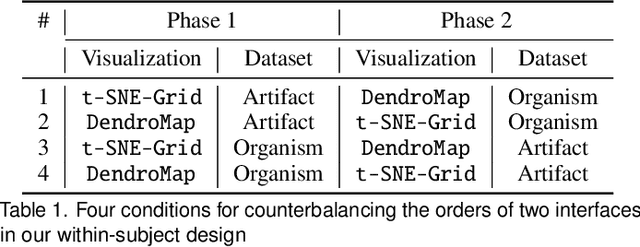Md Montaser Hamid
"Over-the-Hood" AI Inclusivity Bugs and How 3 AI Product Teams Found and Fixed Them
Oct 21, 2025Abstract:While much research has shown the presence of AI's "under-the-hood" biases (e.g., algorithmic, training data, etc.), what about "over-the-hood" inclusivity biases: barriers in user-facing AI products that disproportionately exclude users with certain problem-solving approaches? Recent research has begun to report the existence of such biases -- but what do they look like, how prevalent are they, and how can developers find and fix them? To find out, we conducted a field study with 3 AI product teams, to investigate what kinds of AI inclusivity bugs exist uniquely in user-facing AI products, and whether/how AI product teams might harness an existing (non-AI-oriented) inclusive design method to find and fix them. The teams' work resulted in identifying 6 types of AI inclusivity bugs arising 83 times, fixes covering 47 of these bug instances, and a new variation of the GenderMag inclusive design method, GenderMag-for-AI, that is especially effective at detecting certain kinds of AI inclusivity bugs.
Visual Exploration of Large-Scale Image Datasets for Machine Learning with Treemaps
May 14, 2022



Abstract:In this paper, we present DendroMap, a novel approach to interactively exploring large-scale image datasets for machine learning. Machine learning practitioners often explore image datasets by generating a grid of images or projecting high-dimensional representations of images into 2-D using dimensionality reduction techniques (e.g., t-SNE). However, neither approach effectively scales to large datasets because images are ineffectively organized and interactions are insufficiently supported. To address these challenges, we develop DendroMap by adapting Treemaps, a well-known visualization technique. DendroMap effectively organizes images by extracting hierarchical cluster structures from high-dimensional representations of images. It enables users to make sense of the overall distributions of datasets and interactively zoom into specific areas of interests at multiple levels of abstraction. Our case studies with widely-used image datasets for deep learning demonstrate that users can discover insights about datasets and trained models by examining the diversity of images, identifying underperforming subgroups, and analyzing classification errors. We conducted a user study that evaluates the effectiveness of DendroMap in grouping and searching tasks by comparing it with a gridified version of t-SNE and found that participants preferred DendroMap over the compared method.
 Add to Chrome
Add to Chrome Add to Firefox
Add to Firefox Add to Edge
Add to Edge